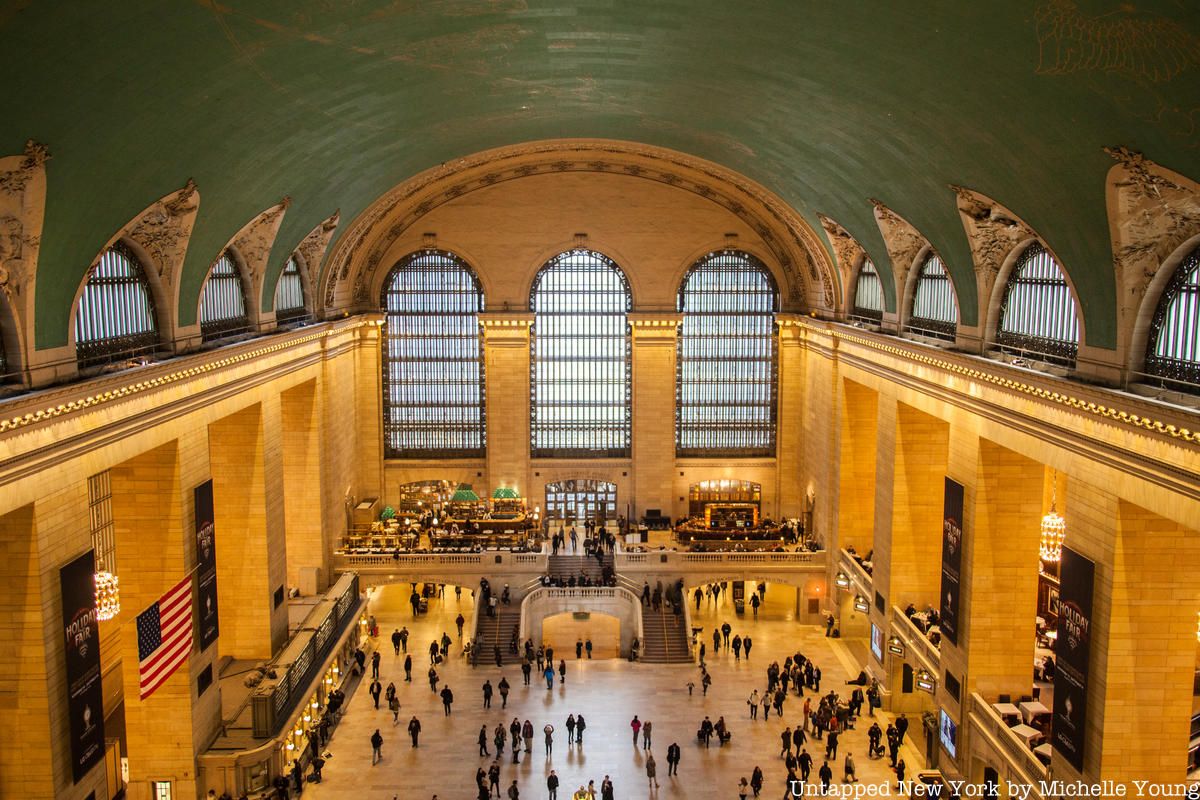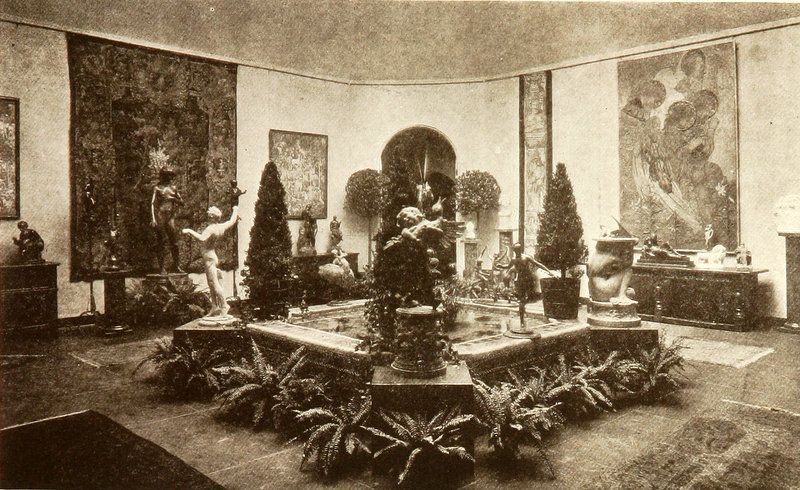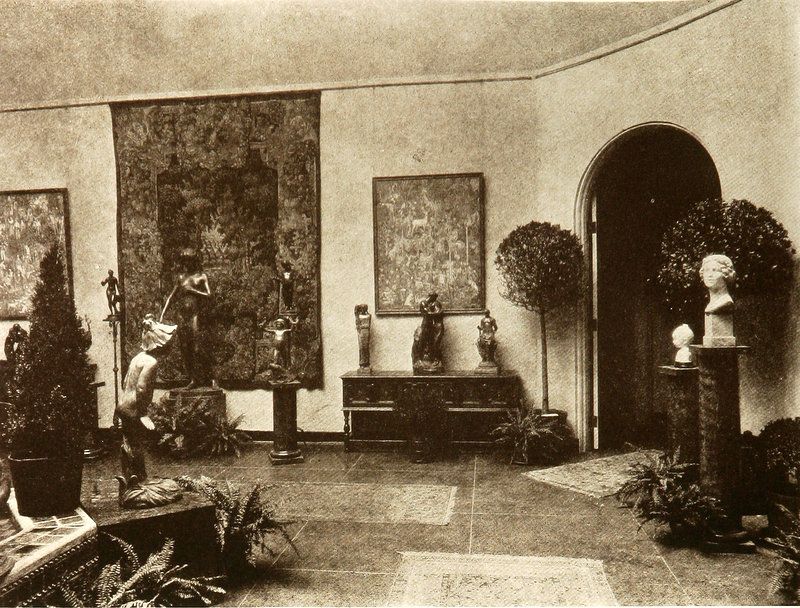Last Chance to Catch NYC's Holiday Notalgia Train
We met the voices of the NYC subway on our nostalgia ride this weekend!

Thanks to a starring role in the bestselling novel, The Masterpiece by Fiona Davis, the lost Grand Central School of Art has returned to the limelight. Established in 1923, the Grand Central School of Art was located on the sixth floor of Grand Central Terminal on the western side. The art school was an offshoot of the Grand Central Art Galleries, founded the year prior by a collective of artists that included John Singer Sargent, Walter Leighton Clark and Edmund Greacen. The Grand Central School of Art, which enrolled 900 students at its peak, count notable artists like Arshile Gorky, Daniel Chester French, Willem de Kooning, and Norman Rockwell as alumni and teachers.
The Masterpiece is a page turner (we finished the 350 page novel in less than a day) and tells a riveting story of two women in New York, separated by nearly half a century. Clara Darden is an aspiring illustrator and teacher at the Grand Central School of Art in 1928, fighting to make it in a man’s world as the Great Depression looms. In 1974, Virginia Clay is a recent divorcée in dire financial straits and has taken a job in the information booth at the crumbling Grand Central Terminal as Penn Central railroad is attempting to get the building demolished. Poking around the terminal, Virginia discovers the artwork of Clara Darden and begins on a quest that will transcend time. Readers will be excited to see that the battle to landmark Grand Central figures heavily in the novel (as well as why it must be called terminal not station!).

The locations revealed in the The Masterpiece align with those seen on the famous off-limits tours once led by Dan Brucker, former manager of tours at Grand Central Terminal including the inside the Tiffany clock, the whispering gallrery, and the glass walkways. Reference is made to the attempted destruction of the M42 basement by Nazi spies, one of Brucker’s favorite stories that he would tell atop one of the remaining rotaries in the basement deep below Grand Central. There is even a scene involving the secret interior staircase that goes from the information booth in the atrium to the one below, rarely seen by the public. Davis does not mention Brucker by name in the acknowledgements (his tours were for years a well-kept secret amongst New York City insiders), but she writes about going on an architectural hard hat tour leaving from the stationmaster’s office that included the glass walkways and track 61 underneath the Waldorf-Astoria Hotel where Franklin D. Roosevelt’s train car still sits. Having attended this tour ourselves, we know there was only one person who had access to these locations — Dan Brucker.

The Grand Central Art Galleries were designed by the prestigious firm Delano & Aldrich, who also designed the Knickerbocker Club, the Union Club, Oheka Castle on Long Island, numerous buildings at Yale University, and many more. In the exhibition catalog from opening exhibition of The Grand Central Art Galleries in 1923, it claims that it was the first time an art gallery had been established in a train station. It opened initially with eight rooms, but the catalog mentions that by September of 1923 “it is expected that the entire series of twenty rooms in the original plan will be ready for use and the Grand Central Galleries will be the largest paintings and sculpture sales rooms in the world.” The 14,000 square foot space also enabled large-scale murals and paintings to be displayed, a real bonus, as the only other place where they could have been “shown properly” was the Fine Arts Building.

The Grand Central Art Galleries, officially known as the Painters and Sculptors Gallery Association, operated as a cooperative, with each of the founding artists pledging $600 annually along with one of their works to be displayed each year. One of the supporters was the President of the New York Central Railroad, Alfred Holland Smith, who made the sixth floor space available to the group for an initial ten year lease. Half of the members were non artists people, so they would receive one piece of work that was presented by the artist members (imagine receiving a John Singer Sargent as part of this scheme!). There was a deliberate attempt to divide art from business, and the galleries were managed by the “business men of the organization.” It claimed that “art politics” caused many previous art cooperatives to have “gone to wreck.”

John Singer Sargent died in 1925 and a posthumous exhibition was organized with sketches and works found in the artist’s studio in London. His sisters requested that Walter Leighton Clark curate the exhibition, which was then held in the Grand Central Art Galleries. The works included sketches for one of Sargent’s most famous portraits, Madame X.


The Grand Central School of Art, which also ran a summer program in Eastport, Main (another pivotal location in The Masterpiece), closed in 1944, but the galleries lived on for quite sometime in different locations. From 1958 to 1981, the galleries were located in the second floor of the Biltmore Hotel. After, they were located at 24 West 57th Street until 1994 when the organization was dissolved. The sixth floor gallery and art school space at Grand Central is now railroad operations and offices so if you go poking around, you won’t find what Virginia Clay discovered in The Masterpiece!
Get your copy of the book The Masterpiece by Fiona Davis on Amazon. You can learn more about the Grand Central School of Art in one of our upcoming tours of the Secrets of Grand Central.
This post contains affiliate links, which means Untapped New York earns a commission. There is no extra cost to you and the commissions earned help support our mission of independent journalism!
Subscribe to our newsletter